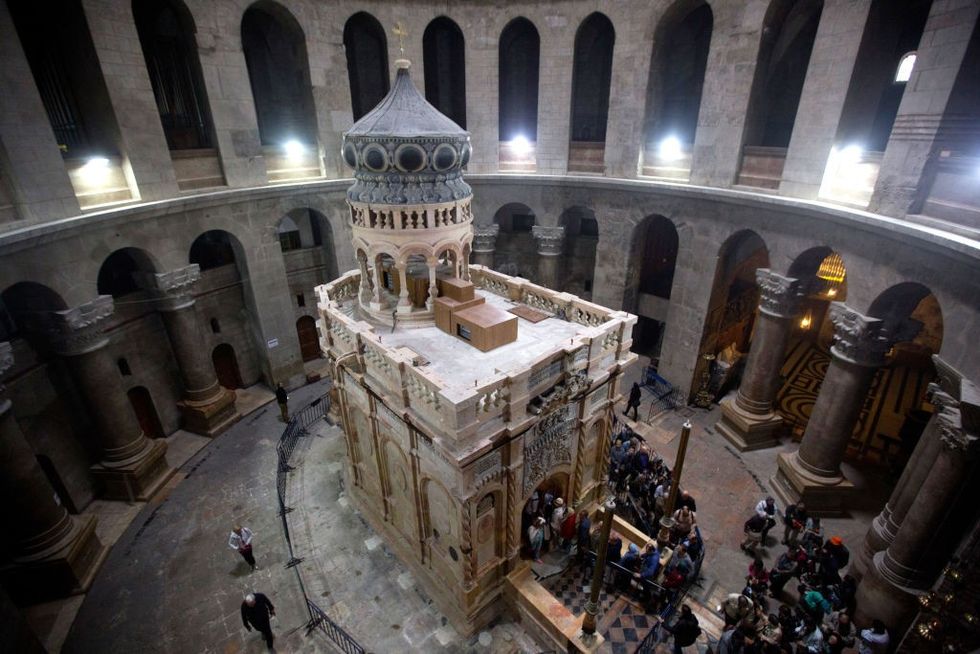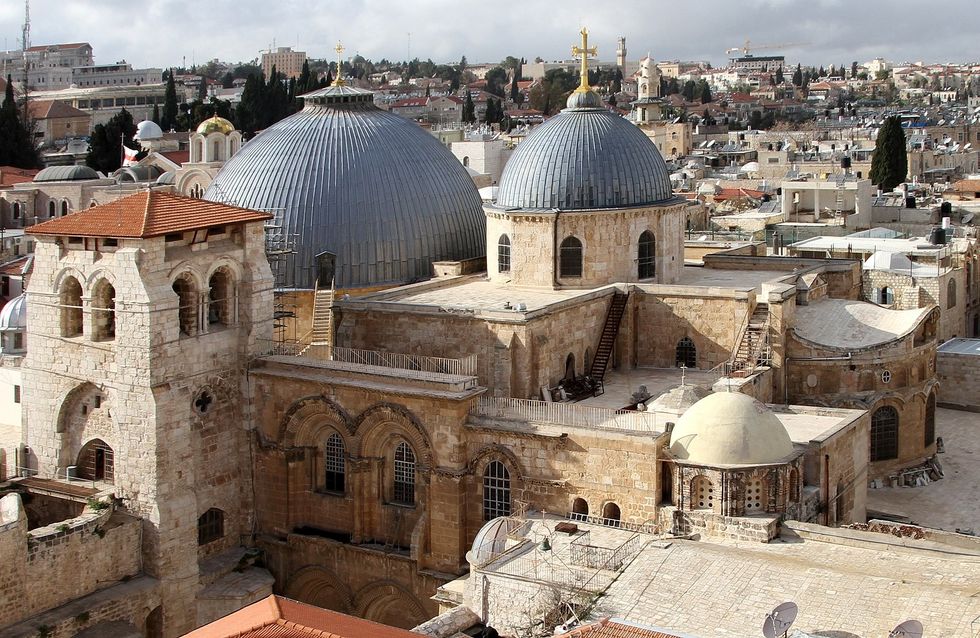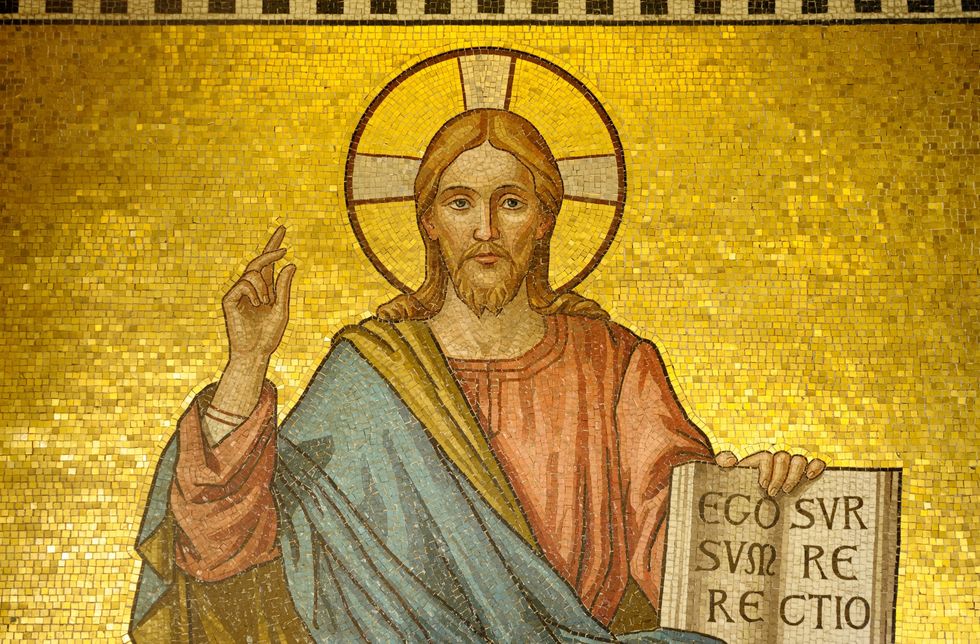WATCH: Moment explosions light up the sky above Jerusalem in attack on Israel
GB NEWS
The discovery in Jerusalem could solve a centuries old debate about Jesus Christ's final moments
Don't Miss
Most Read
Trending on GB News
Archaeologists have made a groundbreaking discovery at the Church of the Holy Sepulchre in Jerusalem, unearthing remnants of an ancient garden at the site where Jesus Christ is believed to have been buried.
A team of Italian researchers from Sapienza University of Rome found evidence of olive trees and grapevines dating back approximately 2,000 years.
The discovery could settle long-standing debates about the exact location of Jesus's crucifixion and burial. The findings appear to confirm Christian tradition regarding the holy site.
The archaeobotanical analysis revealed the presence of plant remains that date to around the time of Jesus's crucifixion, widely believed to have occurred in the spring of 33 AD.

The tomb of Jesus Christ with the rotunda is seen in the Church of the Holy Sepulchre
Getty
Scientists conducted pollen analysis on samples taken from beneath the floor of the ancient basilica.
"Evidence of the presence of olive trees and grapevines from around 2,000 years ago" was discovered during the excavations, which began when the church underwent renovations in 2022.
The findings mark the first major archaeological work at the site since the 19th century.
The discovery aligns perfectly with the Biblical account in the Gospel of John 19:41, which states: "Now in the place where he was crucified there was a garden; and in the garden a new sepulchre, wherein was never man yet laid. There they laid Jesus."
LATEST DEVELOPMENTS

This view from the Mount of the Olives shows the old city walls of Jerusalem, the Dome of the Rock mosque in the Aqsa complex, the Church of the Holy Sepulchre, and the Catholic Franciscan
Getty
This passage specifically mentions a garden surrounding the crucifixion and burial site, as the archaeological evidence now provides physical confirmation of this description, suggesting the gospel writer had accurate knowledge of Jerusalem's topography at the time.
Lead archaeologist Francesca Romana Stasolla told The Times of Israel: "The archaeobotanical findings have been especially interesting for us, in light of what is mentioned in the Gospel of John, whose information is considered written or collected by someone familiar with Jerusalem at the time."
"The Gospel mentions a green area between the Calvary and the tomb, and we identified these cultivated fields," she explained.
The discovery provides tangible evidence supporting the Biblical narrative of Jesus's final resting place. The excavation project revealed that the land had changed significantly over time, from a quarry to cultivated fields and eventually a burial site.

Church of the Holy Sepulchre
WikICommons
Researchers uncovered pottery, oil lamps and soil samples dating back to the Iron Age beneath the basilica.
The restoration project required approval from three religious communities managing the church - the Orthodox Patriarchate, the Custody of the Holy Land and the Armenian Patriarchate. It also needed a licence from the Israel Antiquities Authority.
"Low stone walls were erected, and the space between them was filled with dirt," Stasolla noted about the ancient agricultural use.
The excavations have been temporarily paused to accommodate the influx of pilgrims during Holy Week and Easter celebrations. Researchers plan to resume their work afterwards, hoping to uncover more details about the ancient site.

The discovery could give clues to what happened to Jesus's body after his death
Getty"While we have not been able to see the entire church excavated in one glance, new technologies are allowing us to reconstruct the bigger picture in our labs," Stasolla said.
The Church of the Holy Sepulchre, dating back to the 4th century AD, attracts hundreds of thousands of visitors annually.








